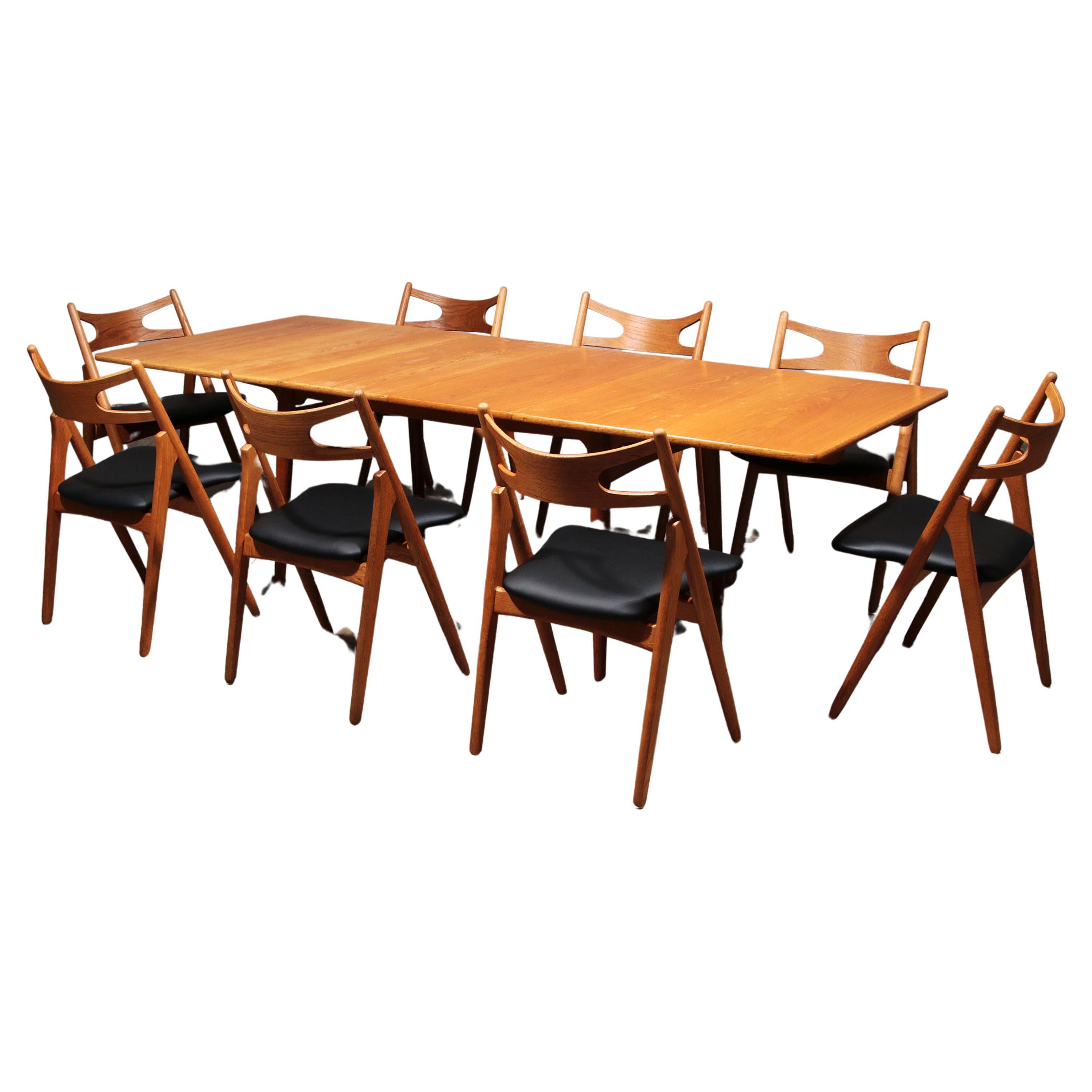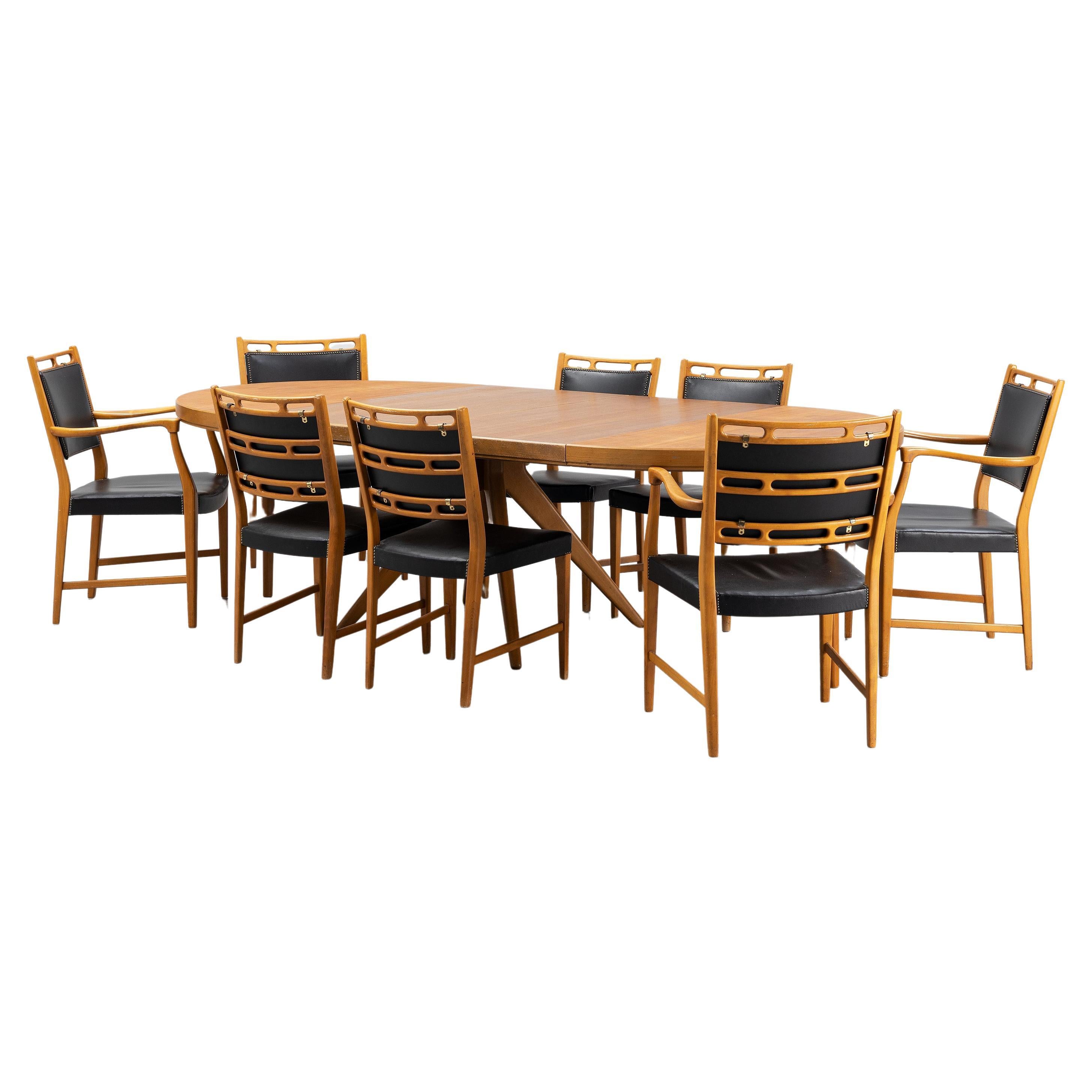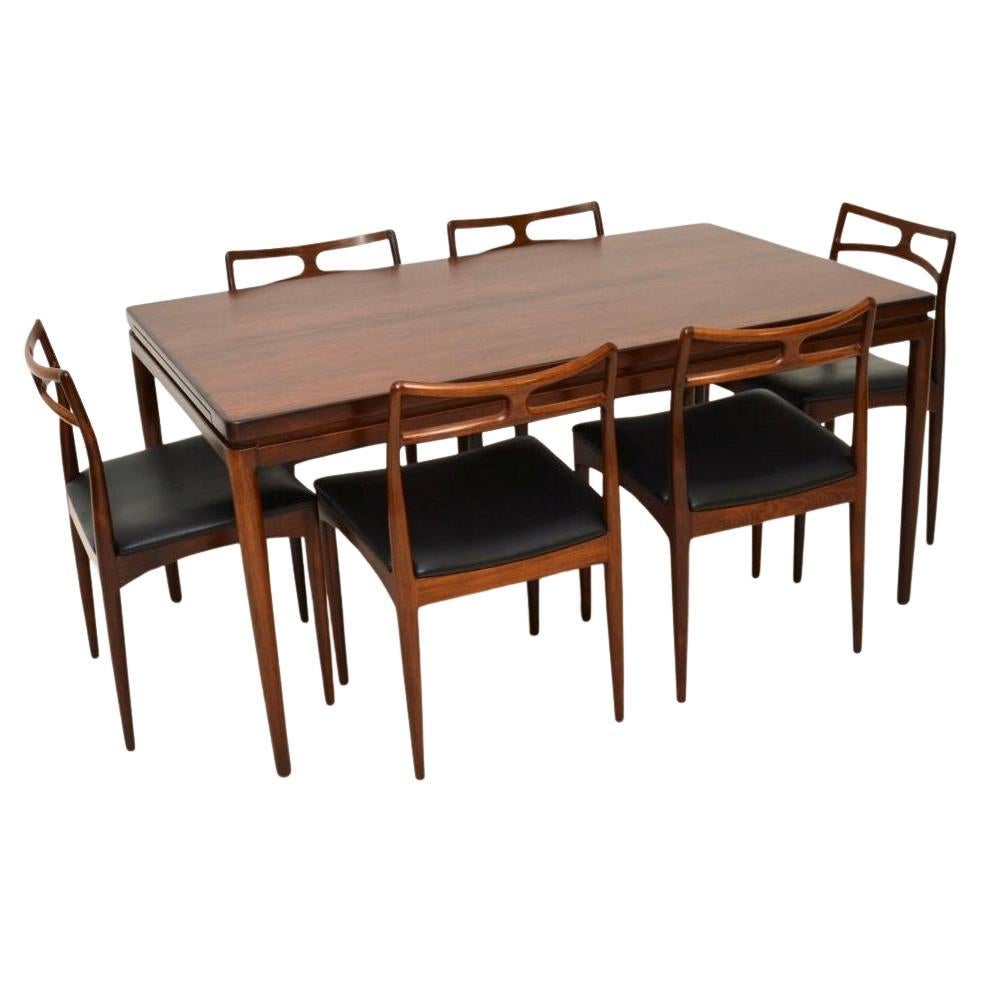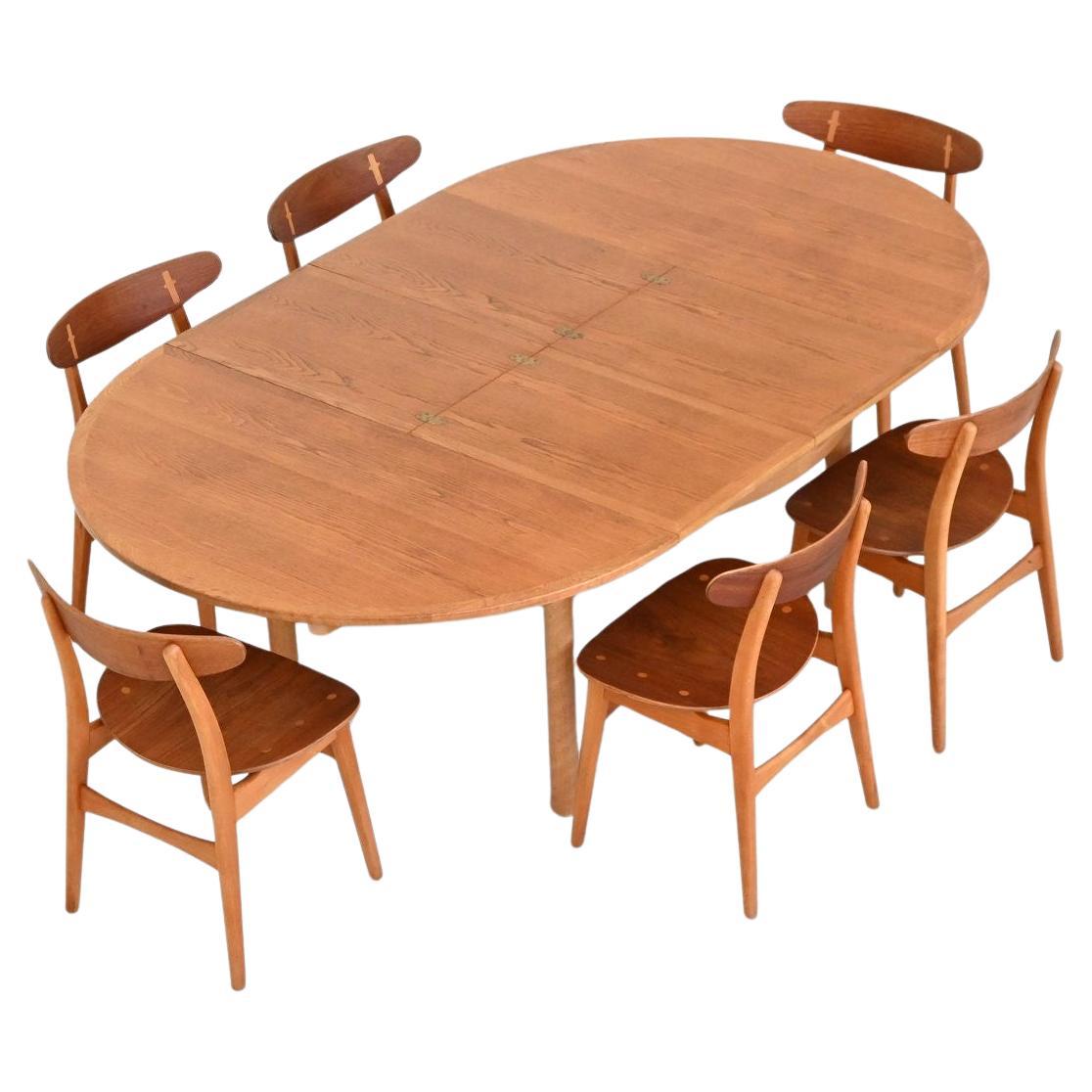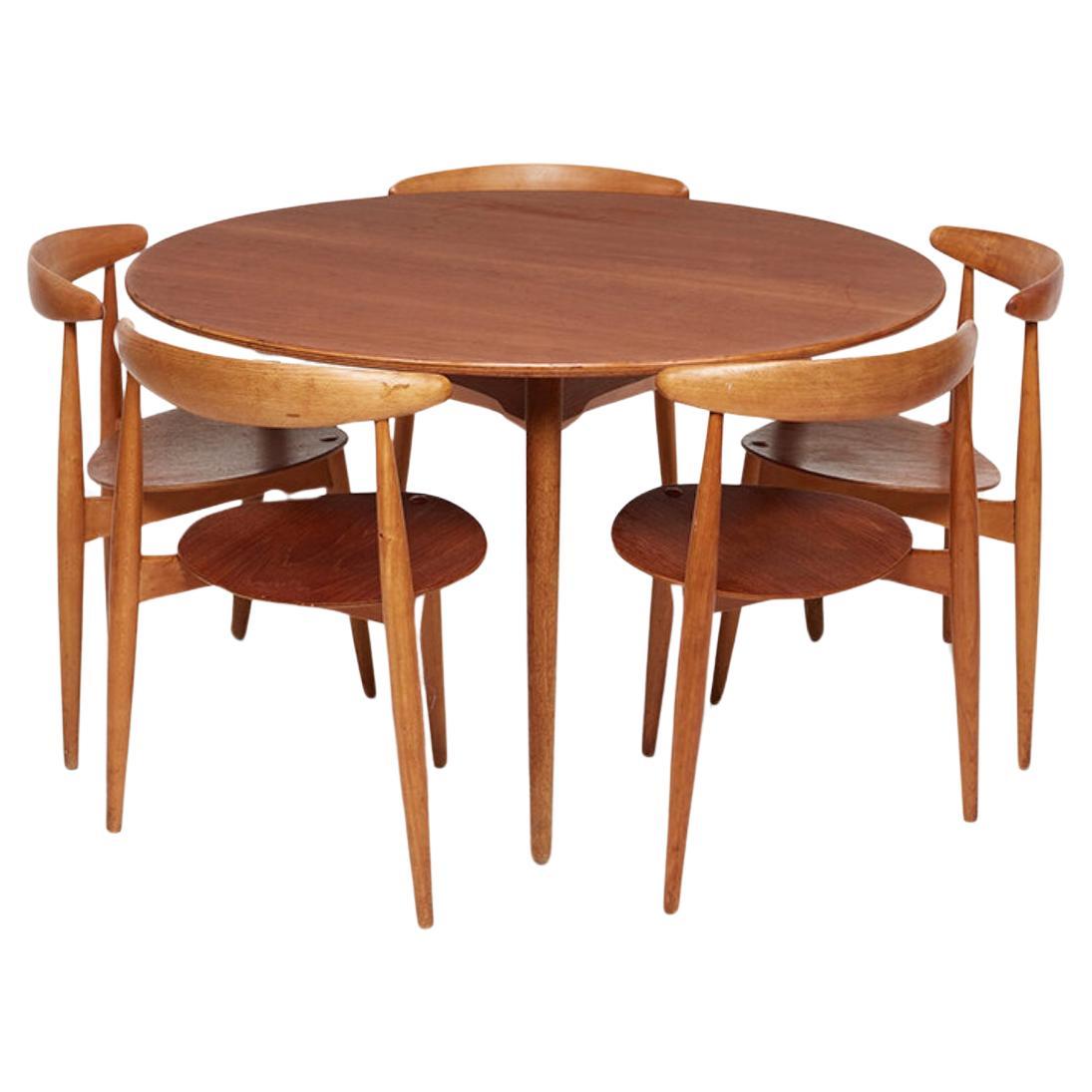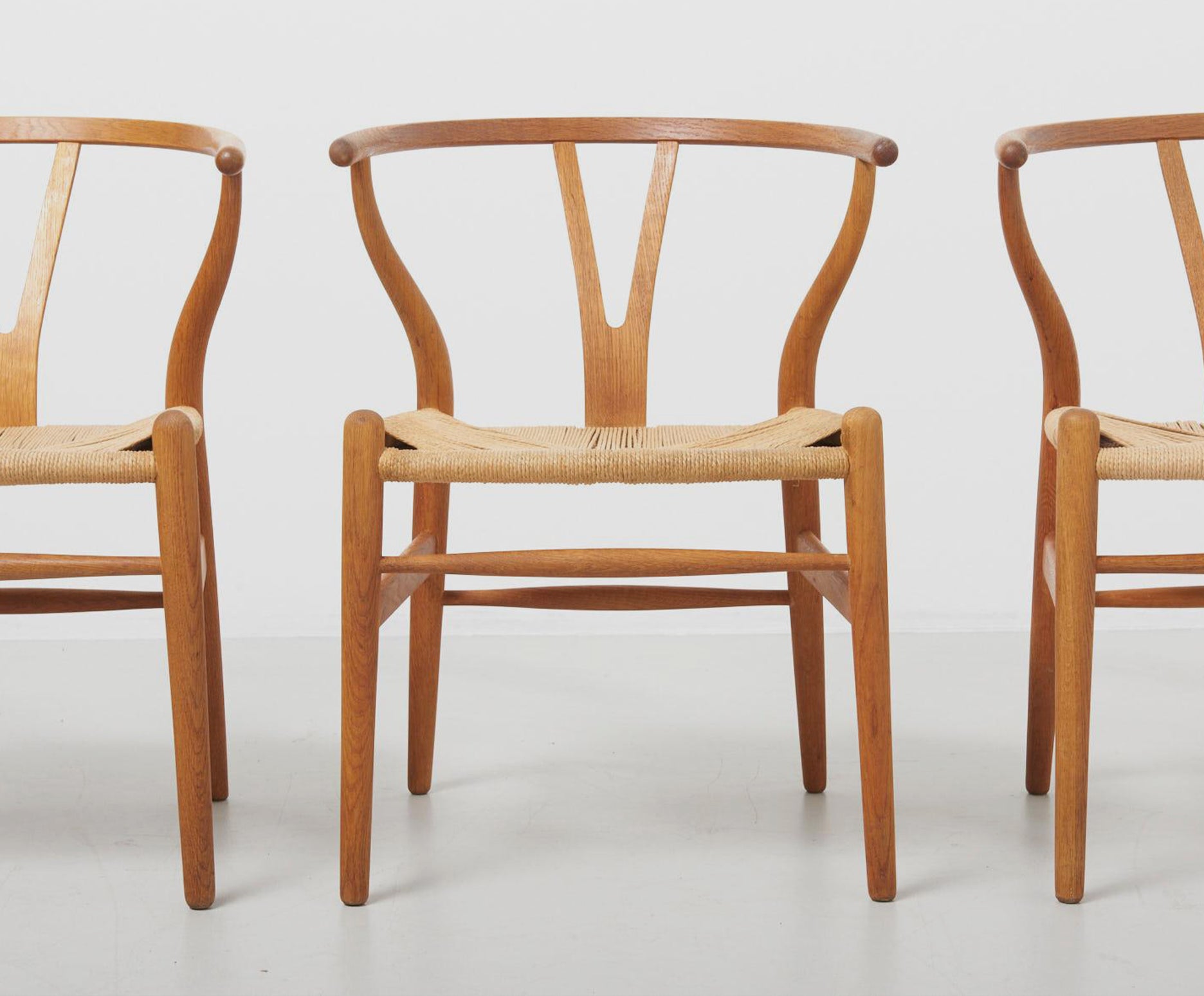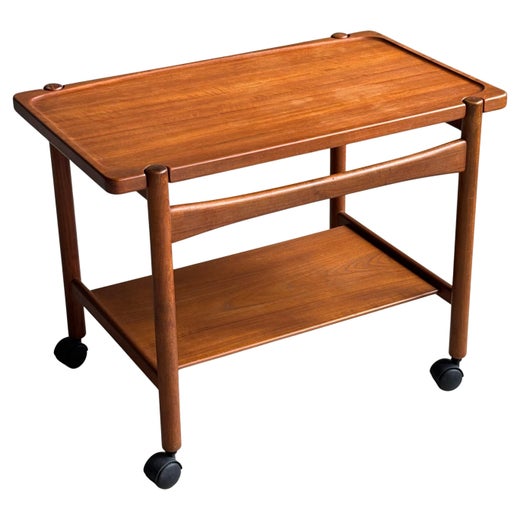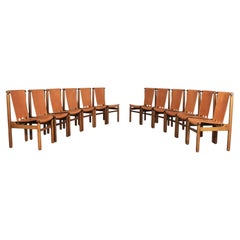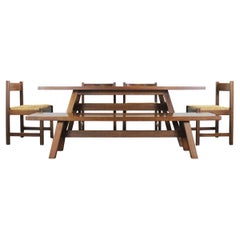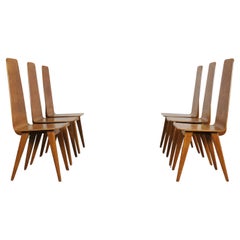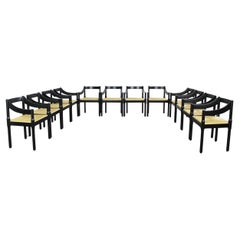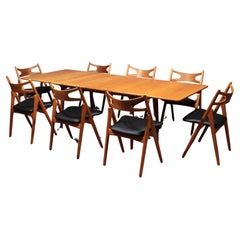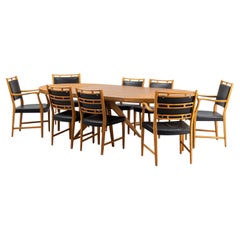Dining Room Set with Borge Mogensen Table and Eight CH24 Chairs by Hans J Wegner
About the Item
- Creator:Hans J. Wegner (Designer),Børge Mogensen (Designer),Carl Martin-Hansen (Manufacturer),Karl Andersson & Söner (Manufacturer)
- Design:
- Dimensions:Height: 27.96 in (71 cm)Width: 123.23 in (313 cm)Depth: 48.82 in (124 cm)
- Sold As:Set of 2
- Style:Mid-Century Modern (Of the Period)
- Materials and Techniques:
- Place of Origin:
- Period:
- Date of Manufacture:1960/1970
- Condition:Wear consistent with age and use.
- Seller Location:Montecatini Terme, IT
- Reference Number:1stDibs: LU5304243081642
Wishbone Chair
Although Hans Wegner’s (1914–2007) Wishbone chair stands as a classic exemplar of mid-century Danish design, its aesthetic roots actually begin farther east. In the 1940s, Wegner, then a recent graduate of the Royal Danish Academy of Fine Arts and working for Arne Jacobsen and Erik Møller, was inspired by a series of photos of Danish merchants sitting in Chinese Ming dynasty–era armchairs. The chairs were recognizable for the single, curved shape that made up their back and arms, a simplified style that intrigued the furniture maker.
For Wegner, the first result of the experiments that followed was his aptly named China chair, a solid wood model that Fritz Hansen began manufacturing in 1944. Soon after, Wegner was approached by Holger Hansen, son of Danish manufacturer Carl Hansen (no relation to Fritz), who wanted the designer to produce a similarly shaped piece for his family’s company. Production was slow following World War II, and Hansen wanted a chair with universal appeal that could be produced entirely in the company’s own factory.
This requirement — coupled with Wegner’s ambition to create a chair that weighed even less than the China chair — resulted in the development of the Wishbone and, with it, its most recognizable feature: a woven paper-cord seat, which takes Carl Hansen’s craftsmen over an hour to make.
Despite the intricate process behind it — the chair requires 100 steps to complete — the Wishbone, in its final form, boasts a graceful simplicity. This is largely thanks to its namesake Y-shaped back, a simple support structure that allows for the back and armrest to function as a single piece and dispenses with the need for multiple back slats, lending the chair an effect of weightlessness.
The sturdiness of the paper cord (all 120 meters of it per chair), meanwhile, makes the Wishbone both long-lasting and blessedly comfortable without the need for a cushion, which would diminish the impact of its pure form.
Today, the Wishbone — official name, CH24 — is one of the most recognizable seats in the world, and it has been in continuous production by Carl Hansen & Søn since its 1950 debut. The company offers it in its original bent oak and natural seat as well as in variations of that model.
For Carl Hansen & Søn’s 110th anniversary in 2018, the company released a select number of Wishbone chairs in eight limited-edition colors, a testament to the chair’s lasting legacy.
Hans J. Wegner
Best known for his chairs and other seating pieces — though a master of many furniture types like sofas and tables — Hans Wegner was a prolific designer whose elegant, often ebullient, forms and devotion to the finest methods in joinery made "Danish Modern" a popular byword for stylish, well-made furniture in the mid-20th century.
Wegner considered himself a carpenter first and a furniture designer second. Like his peers Arne Jacobsen and Finn Juhl, Wegner believed that striking aesthetics in furniture were based on a foundation of practicality: a chair must be comfortable and sturdy before it is chic.
In keeping with that tenet, several of Hans Wegner’s best chair designs have their roots in traditional seating forms. The Peacock chair (designed in 1947) is a throne-like adaptation of the Windsor chair; pieces from the China chair series (begun in 1944) as well as the 1949 Wishbone chair, with its distinctive Y-shaped back splat, are derived from 17th-century Ming seating pieces, as is the upholstered Ox chair (1960). Wegner’s comfy Papa Bear chair (1951) is an almost surreally re-scaled English wingback chair.
Wegner’s most representative piece, the Round chair (1949), gained a footnote in political history when it was used on the TV stage of the first Kennedy-Nixon debate of 1960. That chair, along with Wegner’s more bravura designs — for example, the 1963 Shell chair, with its curved surfboard-shaped seat — bring a quietly sculptural presence to a room.
Wegner was a designer who revered his primary material — wood — and it shows. His wood gathers patina and character with age; every Hans Wegner piece testifies to the life it has led.
Find vintage Hans Wegner lounge chairs, armchairs, daybeds and other furniture for sale on 1stDibs.
- ShippingRetrieving quote...Shipping from: Borgo a Buggiano, Italy
- Return Policy
More From This Seller
View AllVintage 1950s European Mid-Century Modern Chairs
Leather, Wood
Vintage 1960s Italian Mid-Century Modern Dining Room Sets
Straw, Walnut
Vintage 1940s Italian Mid-Century Modern Chairs
Wood
Vintage 1960s Italian Mid-Century Modern Chairs
Straw, Beech
Vintage 1950s Italian Mid-Century Modern Chairs
Leather, Wood
Vintage 1960s Italian Mid-Century Modern Dining Room Sets
Metal, Steel
You May Also Like
Vintage 1960s Danish Scandinavian Modern Dining Room Sets
Leather, Wood
Mid-20th Century Swedish Mid-Century Modern Dining Room Chairs
Wood
Mid-20th Century Norwegian Dining Room Tables
Leather, Wood
Vintage 1960s Danish Mid-Century Modern Dining Room Sets
Faux Leather, Wood
Vintage 1950s Danish Scandinavian Modern Dining Room Tables
Brass
Vintage 1950s Danish Scandinavian Modern Dining Room Sets
Teak
